I have often mentioned on this blog my husband's wonderful cooking skills. He makes one of the best burgers you will ever taste but his real signature dish is his breaded pork chops! This past weekend he decided to take over the kitchen! Here's what he came up with.
 Rib Roast
Rib Roast
Thursday morning I was rummaging through one of the chest freezers holding our new supply of organic, hormone free beef. I wanted ground beef but as I was looking for that I spotted a rib roast that somehow had two corners torn. This does happen with bulk meat purchases from time to time with the transporting from the abattoir to home freezer. It was hot and humid not really nice roast weather day so I put the roast into the refrigerator to thaw.
Saturday my husband wrapped the roast tightly and cooked it on the grill. At the same time he cooked potatoes seasoned with olive oil, salt and pepper then wrapped in foil on the grill. The side vegetables were cauliflower with a little butter and nutmeg, sliced tomatoes and cucumber quarters. It was a lovely meal that kept most of the prep heat out of the house.
 Breakfast
Breakfast
Yes I know breakfast is the most important meal of the day but I have to admit that during the week we very seldom eat breakfast especially a cooked one. I'm quite happy with a bit of homemade yogurt with my coffee or latte while my husband occasionally enjoys a toasted bagel. When we are on vacation or on the weekends we make up for it by having a hot breakfast.
There were left over potatoes from Saturday's roast dinner and half a ream of frozen bacon left from the omelet made the weekend before. In true frugal fashion he fried the bacon on the indoor griddle then set it aside to warm the potatoes. When the potatoes were warmed though he put the eggs on while I made the toast. Once plated we sat eating and chit chatting while watching the beauty of the water.
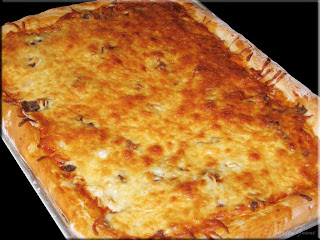 Barbeque Rib Roast Pizza
Barbeque Rib Roast Pizza
The rib roast dinner on Saturday had been an unplanned meal. It was a larger roast as well so there were left overs. Saturday night as we watched a bit of television a commercial for a steak pizza came on. That became the inspiration for a different way to use up some of the rib roast.
I put in a batch of pizza dough just after 3 PM. With the heat and humidity the proofing went a bit quicker than expected. My husband took it from there. Instead of a tomato pizza sauce he used Diana Sauce® for the sauce. After spreading a even layer of Diana Sauce® he layered on thin slices of the roast beef and chopped onions then topped with mozzarella cheese. This mouthwatering pizza tasted every bit as good as it looked! What a wonderful and unique way to use up roast beef!







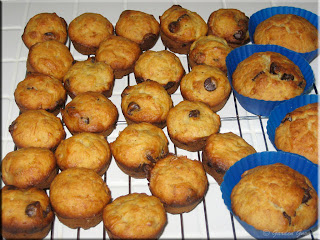 Banana Chocolate Chip Muffins
Banana Chocolate Chip Muffins Tart Shells
Tart Shells Butter Tarts
Butter Tarts
 Mel Burger
Mel Burger Strawberries
Strawberries Bulk Chicken
Bulk Chicken Happy Father's Day
Happy Father's Day Omelet
Omelet Grilled Rib Steak
Grilled Rib Steak Garlic Shrimp Dinner
Garlic Shrimp Dinner Homemade Granola
Homemade Granola Murphy Inn
Murphy Inn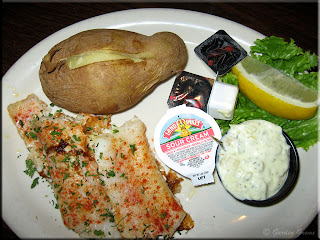 Broiled Cod
Broiled Cod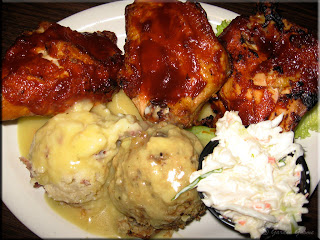 Barbeque Chicken
Barbeque Chicken Onion Rings
Onion Rings Chicken Wings
Chicken Wings Peanut Butter Cookies
Peanut Butter Cookies Rhubarb Pie Filling
Rhubarb Pie Filling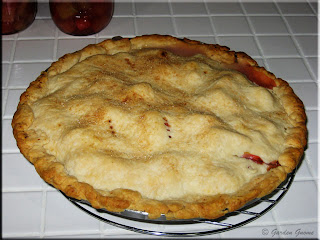 Rhubarb Pie
Rhubarb Pie Deep Fried Perch
Deep Fried Perch Hot Wings
Hot Wings Fiddleheads
Fiddleheads Tomato Salad
Tomato Salad Pork Loin Chops
Pork Loin Chops